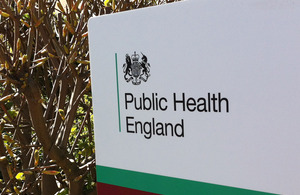A comprehensive review of NHS Health Checks in Leeds
Local health needs assessment and consultation report details outcomes of the NHS Health Check and recommendations for future improvement.

Summary
A review of outcomes in Leeds from the NHS Health Check was conducted for the period 2011 to 2016. The review focused on outcomes such as diagnosis of cardiovascular disease (CVD) and identification of behavioural risk factors. Recommendations for improving the uptake of the NHS Health Check (NHSHC) and reaching vulnerable groups are made.
Background
CVD mortality rates in Leeds vary. A breakdown of the life expectancy gap between the most deprived quintile (MDQ) of Leeds City Council and the England average by cause of death has shown that circulatory diseases make up 29% of the life expectancy gap between Leeds and England for males and 24% of the life expectancy gap for females.
Linked to the Department of Health’s ‘Living Well for Longer’, a call to action on avoiding premature mortality and the CVD outcomes strategy was launched in 2009.
The initial implementation of NHSHC in Leeds in 2009 was through a staged roll out, focusing on the GP practices within the most deprived parts of the city. In 2013 the responsibility for NHSHC was transferred to the Local Authority and is now 1 of 5 mandated services.
The Leeds implementation approach focused on:
- the outcomes - to reduce health inequalities for the poorest fastest
- being systematic
- primary care record as the corner stone
- patient at the centre - to provide continuous insight gathered from people and evaluation of our approach
- clinical engagement
- a staged roll out implementation plan based on level of deprivation and estimated highest risk
- all 103 GP practices implementing the NHSHC in Leeds
What works well?
A review of outcomes from the NHSHC was conducted for the period 2011 to 2016.
Analysis showed that over the period of 2011 to 2016, 114,339 NHS Health Checks were completed, resulting in 16,054 (14%) new diagnoses or high risk people being identified. This includes:
- 721 diabetes diagnoses
- 96 chronic kidney disease
- 207 atrial fibrillation
- 2,371 individuals at high risk of developing diabetes
- 4,101 diagnoses of hypertension
- 8,558 with a greater than 20% 10 year CVD Risk
A review of referrals following NHSHCs in 2015 to 2016 showed:
- 5,139 smokers identified, with the majority offered advice and 343 referred to smoking service
- 5,098 individuals with a BMI over 30, with 1,474 offered advice and 161 referred to weight management services
- 7,185 individuals were inactive or moderately inactive and completed a Global Physical Activity questionnaire (GPAQ) -10,494 were offered advice and 348 referred to an exercise programme.
- 1,242 completed the Audit C alcohol screening tool, with 5,392 offered advice (no referral data available)
What could be better?
Several challenges in implementing the NHSHC in Leeds have been identified. These include:
- invitations to the NHSHC have declined over recent years
- the percentage of people attending from the most deprived communities has decreased from 18% to 13%
- uptake is higher in the over-50s age range
- only between 9% and 11% are from Black, Minority Ethnic (BME) communities
- men have consistently had the lowest uptake but are more likely to be found to be high risk
- there is under-representation from people with learning disabilities
- people with severe mental illness are not accessing NHSHCs
Recommendations for the future
More marketing and promotion
Feedback from current providers, wider stakeholders and the public highlighted the need for awareness raising of the service to ensure the eligible population know of its existence and their eligibility. Promotional material should be tailored rather than a one size fits all approach.
More flexibility
The service should ensure that all eligible individuals can access an appointment that suits them with relative ease, at a time and location that fits in with their work and life demands
Improved engagement
The provider should demonstrate their ability to increase uptake among main groups, in particular:
- males
- people from the 40 to 49 age group
- people with learning disabilities and/or severe mental illness
Improved patient communication
Patients wanted to receive more information on what their completed NHSHC means to them. This could be in the form of a paper handout or an online platform.
Assured quality standards
The quality and consistency of the NHSHC being offered to the patient should be assured, by accessing relevant training. A quality assurance or audit tool completed by the provider should also be built into the specification irrespective of the delivery location.
Next steps
The model for lead providers should involve:
- increased flexibility in terms of time and location for eligible people
- a focus on males, those living in the most deprived quintile, people working full-time and those with a learning disability or severe mental illness
There needs to be continued GP involvement in the delivery of the programme as their strengths as providers of the NHSHC are acknowledged and should be considered as part of any future delivery model. But this should be linked in with wider services, engaging with community leaders and targeting communities with a credible plan for outreach activities.
Marketing and communication should be simple, understandable and relevant to target service users and be targeted to specific groups rather than being a one size fits all approach.
Digital providers should be able to demonstrate how they can use online platforms to support the promotion and/or delivery of the NHSHC.
Finally arrangements for implementing the NHSHC should fit with the new health and care landscape of accountable care systems and the relevant primary care engagement schemes for the prevention of CVD.
Further information:
Lucy Jackson, Consultant in Public Health, Leeds City Council.
Melanie Earlam, Health Improvement Manager, Public Health England